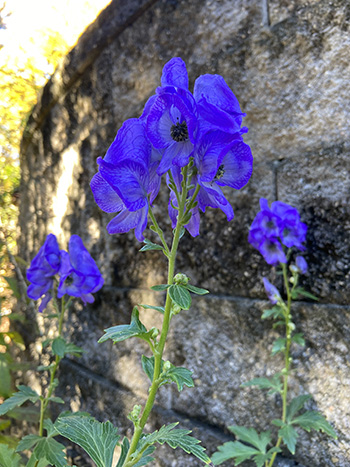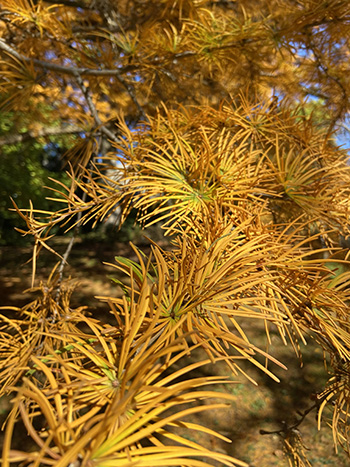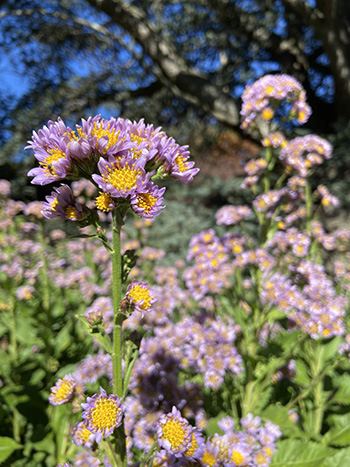
Plants of the Week: Oct. 31

Aconitum carmichaelii ‘Arendsii’ (azure monkshood)
Beautiful… but dangerous; a recent bloom in the garden has arrived with its seductive color and its hood pulled low. Aconitum carmichaelii ‘Arendsii’ has bloomed in a variety of gardens here at the Scott Arboretum, including the Pollinator Garden, North Kohlberg Border, and the Cut Flower Garden.
This attractive plant has spires of rich azure-blue hooded flowers that grow above attractive dark green foliage. Growing from 2-5 feet this erect tuberous perennial has flowers that are born on to particularly strong stems that do not require staking and are fantastic in the rear of borders where their height can be appreciated. Happy in partial sun with moist, well-draining soils, these lovely fall blooms will add interest to your garden from September to November.
Azure monkshood is part of the genus Aconitum which is commonly referred to as wolfsbane and has been intertwined within folklore and fantasy. Due to the toxicity of the Aconitum carmichaelii ‘Arendsii’ I would advise caution when handling this plant and suggest planting it in an area away from where children or pets could access it. But despite its reputation and cautions I couldn’t be more pleased to see this specimen delighting the gardens here at Scott Arboretum. Photo credit: M. Rossman

Pseudolarix amabilis (golden larch)
Recounting my childhood in the mountains of Colorado, growing up I learned the aspen trees (Populus tremuloides) loose their leaves in the fall but all the needled trees do not. I continued to hold this knowledge as truth and applied it to every other needed tree I encountered. And yet, to my surprise I have found myself reassessing my knowledge and adjusting those early learned binaries as I learn more and more. One such tree in particular is helping me to expand my knowledge and that is the Pseudolarix amabilis, or the golden larch.
This deciduous conifer is currently glowing a beautiful golden and is quite a stunner in its location in the Peony Collection. At a height of 55 feet, this eastern China native is transitioning to winter as its soft green foliage turns yellow and it is losing its needles. We have other deciduous conifers here at Scott Arboretum including the Metasequoia glyptostroboides (dawn redwood) and the Taxodium distichum (bald cypress), which will also lose their needles as winter approaches, but they have not begun this transition yet.
I highly recommend visiting this Heritage Tree specimen and experiencing for yourself its incredibly soft needles that break away from the branch under your touch to contribute to the golden carpet below. Photo credit: M. Rossman

Aster tataricus ‘Jindai’ (tatarian aster)
Here at the Scott Arboretum, this fall has been dominated by purple blooms. The Aconitums (monkshood), Colchicums (fall crocus), and most stunningly, the Asters. One aster in particular that caught my attention this week is the Aster tataricus ‘Jindai’ (tatarian aster).
Blooming from September through November, this Zone 4-8 plant is most notable for its tall stems that bring these blooms up above the garden bed. Even better, they have sturdy stems that seldom require staking!
Growing best in medium moisture, well-drained soils in full sun the tatarian aster has small, but abundant flowers with deep lavender to blue rays and mustard-yellow centers. This perennial looks wonderful in the middle or rear of borders where its height can be appreciated; it pairs well with other yellow plants that bring out its bright center such as Solidago (goldenrod). Come view the lovely Aster tataricus ‘Jindai’ for yourself here at the Scott Entrance Garden where it is standing tall and abundant. Photo credit: M. Rossman





No Comments